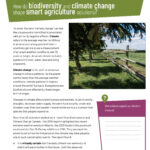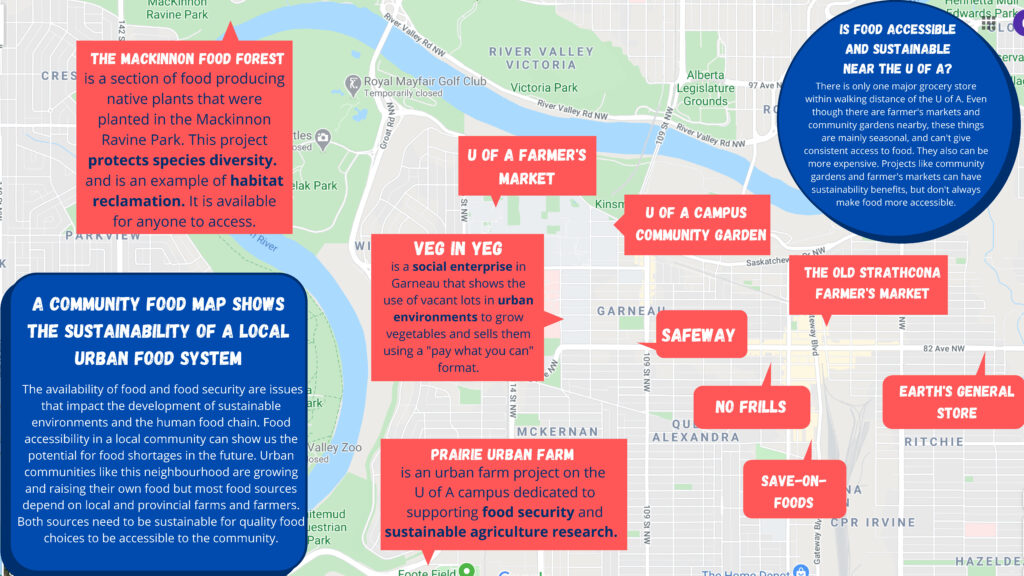How many breeds of dairy cows are found in Canadian farms?
build these competencies
climate smart in Alberta
Alberta’s climate-smart practices involve three goals:
- Increase productivity
- Adapt to changing climates
- Lower greenhouse gas emissions
Many farmers and ranchers in Alberta have already implemented practices that meet all three of these climate smart agriculture goals.
climate management from a farmer’s perspective
 Watch this original project AGRICULTURE video interview for a quick overview of some of the impacts of climate change.
Watch this original project AGRICULTURE video interview for a quick overview of some of the impacts of climate change.
making a peep
In February of 2014, Egg Farmers of Alberta launched the Canadian egg industry’s first environmental program. The Producer Environmental Egg Program (PEEP) is intended to help egg farmers better identify their impacts on the environment and facilitate the use of best practices.
PEEP provides information about the impacts of on-farm activities and helps to establish goals for improvement. The PEEP assessment is focused on key impact areas such as energy use, water consumption and manure management, which helps farmers identify and address environmental risks and opportunities to improve their carbon footprint.
thinking net zero
In 2016, Egg Farmers of Alberta launched a new project – the creation of a net zero barn, one that would produce no net greenhouse gas emissions. When Egg Farmers of Alberta put out the call for a test barn, Darrel Mandel and the Brant Hutterite Colony stepped up.
The idea of the net zero barn involved 13 000 hens laying eggs every day, with no contribution to climate change—potentially a game changer in the egg farming industry. The challenge required both new technology and techniques.
Two innovations were key. First, 100 solar panels line the barn roof and power the equipment inside. Second, a unique heat recovery ventilator or HRV – the first of its kind in a Canadian egg barn – essentially “preheats” air drawn into the barn during winter, saving energy otherwise spent heating the interior of the barn.
Lambert, T. (2016). 13,000 chickens, zero emissions: the quest for a green barn. Eggfarmers.ca.
keeping the environment in mind
Across Canada, dairy producers complete an Environmental Farm Plan, which is a tool that helps farmers to identify environmental risks. Farmers then prioritize how they will implement practices that will improve their environmental footprint. This includes practices that reduce greenhouse gases.
Canadian dairy farmers reuse, reduce and recycle on their farms. This includes using cow manure in combination with commercial fertilizers, and rotating crops to improve soil quality and fertility. The goal is to keep nutrients in the soil by minimizing losses from contact with water or the atmosphere.
Eco-efficient crop production contributes to lowering dairy farms’ average land use. For instance, the land required to produce 1L milk is 1.7 square metres, roughly the same amount of land required to produce a standard loaf of bread.
Selecting good sires can improve the genetic potential of each generation of cows and is key to better longevity and yield.
Giving animals a precise and balanced diet, with the right amount of protein, can also lower nitrogen content in manure. Plus, feeding an appropriate balance of energy-rich feeds lowers the amount of methane produced during the cow’s rumination.
Finally, using renewable energy is another way some Canadian dairy farmers are making a difference. While some use biodigesters to transform methane from manure into electricity, others have turned to reusable energy, such as solar power and wind turbines on the farm.
food movement
Food products often travel long distances to reach consumers. The movement of food is complex – it happens through ships, trains, trucks, planes and warehouses and often requires special packaging. The food chain can be challenged by seasonality, freshness, spoilage, sanitary and food safety considerations.
How does food movement and transportation impact greenhouse gas emissions? International water shipments of food have the lowest impact. This is followed by inland water routes and rail. Trucking produces 10 times more greenhouse gas emissions per ton. Air transportation is 40 times higher – faster transportation methods produce more greenhouse gas emissions.
![]() What advantages and drawbacks do you see with each form of food movement and transportation?
What advantages and drawbacks do you see with each form of food movement and transportation?














